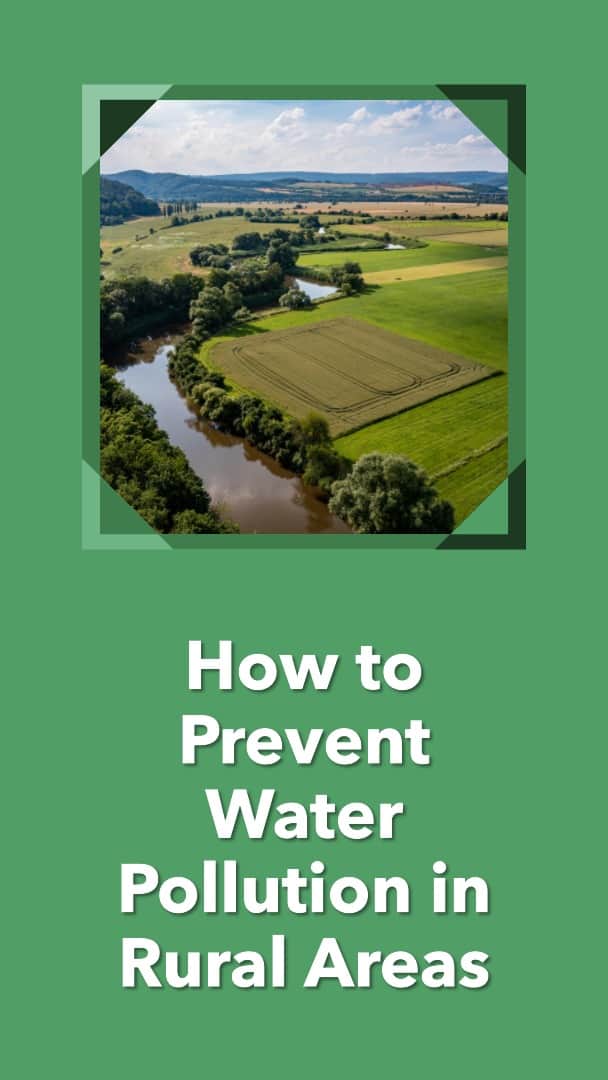With the looming threat of climate change, many individuals are taking it upon themselves to make eco-friendly choices.
But where should one start? Right here!
Dive into our comprehensive guide on ways to reduce your personal carbon footprint, and join millions who are championing a greener planet.
10 Ways to Reduce Your Personal Carbon Footprint

Understanding our personal carbon footprint is the first step towards a more sustainable lifestyle. By making conscious choices, we can significantly decrease our environmental impact.
Here are some strategic and effective measures to consider.
Embrace Energy Efficiency at Home
Today’s homes are buzzing centers of energy consumption, from lighting to heating to the gadgets we use daily. The good news is that with a little awareness and some straightforward changes, households can become more energy-efficient.
Switch to LED Bulbs: Traditional incandescent bulbs consume an inordinate amount of energy and have a shorter lifespan. In contrast, LED bulbs are the shining stars of energy efficiency. They use up to 80% less energy and can last up to 25 times longer. Over time, this switch not only reduces one’s carbon footprint but also offers considerable savings on electricity bills.
Use Energy-Efficient Appliances: Did you know that a vast chunk of your power bill arises from appliances? ENERGY STAR-rated products, which are certified for efficiency, can be game-changers. For instance, an ENERGY STAR refrigerator uses at least 15% less energy than non-certified models.
Unplug Electronics: Here’s a shocker – many devices, when left plugged in, consume energy even if they’re turned off. This phenomenon, known as “phantom energy,” can account for up to 10% of household energy consumption. Simply unplugging gadgets or using a power strip to turn off multiple devices can make a significant difference.
Sustainable Transportation Choices
As urban areas expand and roads get busier, transportation’s environmental impact becomes increasingly evident. But with strategic decisions, we can tread lighter on the planet.
Carpooling: Imagine the number of cars on the road during peak hours. Now, picture half of those removed. That’s the potential of carpooling. By sharing rides with neighbors or colleagues, we can drastically reduce emissions, decrease traffic congestion, and even foster community ties. Plus, it’s easier on the wallet!
Public Transport: Buses, trains, and trams can carry numerous people at once, making them a highly efficient mode of transport compared to individual car rides. A single bus journey can negate the emissions of dozens of cars, providing cleaner air and less crowded streets.
Biking and Walking: The old-school methods of getting around have profound benefits. Not only are walking and biking entirely emission-free, but they also offer remarkable health advantages. And let’s not forget, in densely packed cities, cycling can even be faster than driving!
Mindful Eating
Our food choices have far-reaching environmental implications, often more than we realize. Adopting a conscious approach to what we eat can be one of the most impactful ways to reduce our carbon footprint.
Plant-Based Diet: The process of raising, feeding, and processing animals for meat has a heavy environmental toll. Methane emissions from cattle, deforestation for pastures, and water usage in animal farming all add up. By opting for a vegetarian or vegan diet, or even just reducing meat intake, individuals can significantly decrease their carbon footprint.
Buy Local: Foods in the supermarket travel a long average distance from farm to fork, often crossing international borders. This travel results in considerable carbon emissions. Local produce, on the other hand, is fresher, supports the local economy, and has a reduced carbon footprint due to shorter transport distances.
Waste Not, Want Not: An astounding amount of food is wasted globally each year, contributing to greenhouse gas emissions. By planning meals, storing food correctly, and understanding expiration dates, we can ensure minimal wastage. Composting organic waste also helps by returning nutrients to the soil and reducing methane emissions from landfills.
Reduce, Reuse, Recycle
The mantra “Reduce, Reuse, Recycle” isn’t just a catchy phrase—it encapsulates a transformative approach to consumption and waste management.
Reduce: At its core, the idea here is simple—consume less. In today’s world, overconsumption leads to vast amounts of waste, and by curbing our buying habits, we can dramatically decrease the strain we put on the environment. This includes not only buying fewer items but also opting for products with minimal packaging or sustainable packaging.
Reuse: Before tossing something out, consider if it has a secondary use. An old t-shirt might become a cleaning rag, and glass jars can serve as storage containers. Embracing the idea of reusing not only cuts down on waste but can also be a fun and creative exercise in finding multiple uses for a single item.
Recycle: It’s more than just throwing things into a blue bin. It’s a conscious decision to prevent waste from heading to landfills where it can’t decompose properly. From paper to plastics to metals, many materials can be recycled to produce new products, reducing the need for virgin resources and the environmental damage associated with extracting them.
Minimize Water Waste
Water is life. Yet, in many parts of the world, it’s a scarce resource. Conserving water not only ensures its availability for future generations but also reduces the energy costs associated with water treatment and distribution.
Fix Leaks: That dripping faucet might seem insignificant, but over time, it can waste an astronomical amount of water. Fixing leaks promptly ensures that we’re not losing water in places where it isn’t even being used.
Shorter Showers: While a long, hot shower can be therapeutic, it also uses a lot of water and energy. By cutting down shower times, we can save both. Even a reduction by a couple of minutes can save gallons over the course of a year.
Water-Saving Appliances: Modern technology has given us appliances designed to function efficiently with less water. From low-flow toilets to high-efficiency washing machines, these devices can significantly reduce household water consumption.
Sustainable Shopping Habits

Our shopping choices directly impact the environment. From the resources used in creating products to the emissions associated with their distribution, every purchase has a footprint. By making thoughtful shopping decisions, we can reduce this impact.
Buy Less, Choose Wisely: It’s tempting to indulge in impulse purchases or get swayed by sales, but it’s essential to ask ourselves if we truly need what we’re buying. Opting for quality over quantity ensures that we buy items that last longer, reducing the need for frequent replacements.
Eco-Friendly Products: The market today is brimming with sustainable alternatives. Whether it’s biodegradable trash bags, bamboo toothbrushes, or organic cotton clothing, choosing eco-friendly products significantly reduces environmental harm.
Avoid Fast Fashion: The fast fashion industry is notorious for its environmental toll. Rapid production cycles, non-sustainable materials, and unethical labor practices mar its reputation. Instead of buying into this cycle, invest in timeless, quality garments that won’t need to be replaced frequently.
Green Gardening and Landscaping
Our outdoor spaces, whether a sprawling backyard or a compact balcony, can be havens of sustainability, promoting biodiversity and ecological balance.
Native Planting: By choosing plants native to your region, you’re ensuring that they’ll thrive with less maintenance and water. Native plants are naturally adapted to the local climate and soil, which reduces the need for fertilizers and pesticides.
Composting: Transforming kitchen waste and yard clippings into nutrient-rich compost not only reduces landfill waste but also provides an excellent, natural alternative to chemical fertilizers for your garden.
Limit Lawn Space: While lawns might be appealing, they’re water and maintenance-intensive. Consider reducing lawn space in favor of flower beds, shrubbery, or even vegetable gardens that are both functional and environmentally beneficial.
Support Renewable Energy
Transitioning from fossil fuels to renewable energy sources is paramount for a sustainable future. Individual actions can have a collective influence in driving this transition.
Solar Panels: While there’s an initial investment, installing solar panels can dramatically reduce electricity bills in the long run and minimize reliance on non-renewable sources. In some regions, excess energy generated can even be sold back to the grid.
Green Energy Programs: Many utility companies offer programs where consumers can opt to source their electricity from renewable sources, even if they can’t install personal renewable energy systems.
Stay Informed and Vote: Policies and regulations can fast-track the adoption of renewable energy. Staying informed about local and national energy policies, and voting accordingly, can help shift the balance toward a greener future.
Educate and Advocate
Knowledge is a catalyst for change. By educating ourselves and those around us about the importance of sustainable living, we can create ripple effects in our communities.
Community Workshops: Consider hosting or attending workshops that focus on sustainability, from DIY composting tutorials to seminars on energy conservation.
Support Eco-Friendly Initiatives: Whether it’s a community clean-up or a tree-planting drive, participating in or supporting such initiatives can foster a culture of environmental consciousness.
Teach the Young: Children are the future custodians of our planet. Incorporating sustainability lessons into their upbringing ensures that they grow up with a deep-rooted respect for the environment.
Conscious Travel Choices
Traveling broadens horizons but also often comes with a significant carbon footprint. However, with mindful decisions, one can explore the world in eco-friendlier ways.
Opt for Trains Over Planes: Whenever possible, consider taking trains instead of flights for shorter distances. Trains generally have a much lower carbon footprint per passenger compared to planes.
Eco-Tourism: Support places that operate with a focus on local ecology and sustainability. Such spots often ensure that the environmental impact of your stay is minimal and give back to the local community.
Pack Light: Believe it or not, the weight you carry when flying influences fuel consumption. Lighter luggage means lighter planes and, consequently, reduced emissions.
Key Takeaways

Reducing your personal carbon footprint isn’t just about making big changes; it’s about making the right ones.
By integrating these strategies into your daily life, you can make a positive impact on our planet.
Remember, every little bit helps!
I’m Thomas, the owner of SustainableWave. Passionately promoting a sustainable planet. With experience in various eco-roles, I’ll share green tips, sustainability hacks, and personal eco-journeys on my blog.






